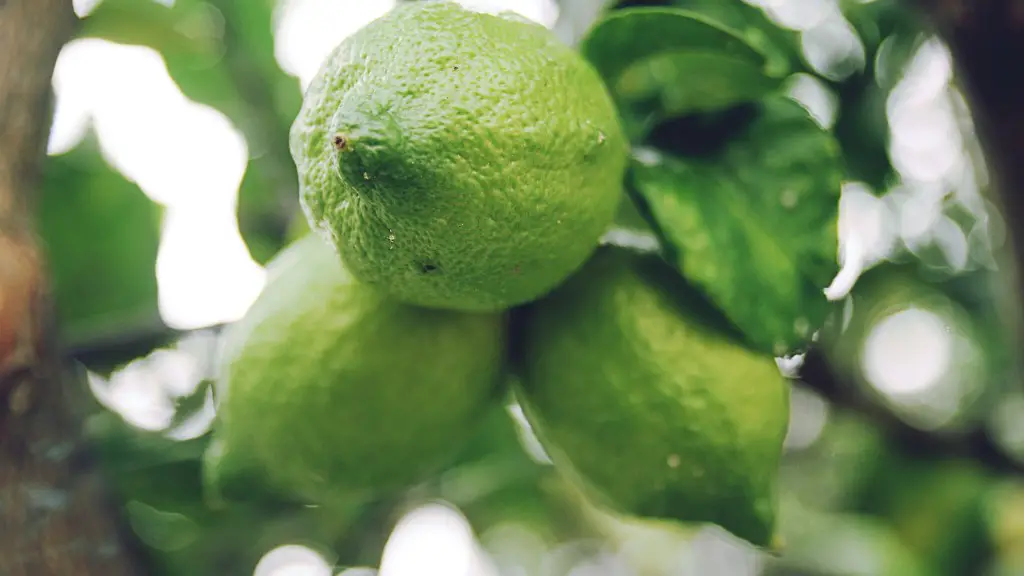How Long Does a Cherry Tree Bloom?
Cherry trees are among the most beautiful and beloved fruit trees in the world—and they’re also incredibly productive. Their beautiful bloom and delicious final product make them worthy of their dedicated place in gardens around the world.
The question of how long a cherry tree will bloom is an important one for anyone who wants to enjoy the beauty of the tree’s blossom, as well as anyone who’s growing a cherry tree for its fruit. The good news is that the answer is simple: a cherry tree usually blooms for up to two weeks!
This two-week long blooming period normally takes place from late March through April, depending on what kind of cherry tree you have and where you live. Sweet cherry trees blossom with larger flowers and tend to attract more bees for pollination. Tart cherry trees also have a shorter bloom period and have smaller flowers.
Another important factor in determining how long a cherry tree takes to reach full bloom is climate. Warmer climates tend to cause cherry trees to bloom earlier in the season, while colder climates may delay the blossoming time.
In addition, native cultivars are better adapted to local climates than imported cultivars, meaning they will often bloom a bit longer, and with larger flowers. And as far as flower quality, native cultivars also tend to produce more flowers and be more resistant to pests and diseases.
Finally, it’s worth mentioning that while cherry trees usually bloom for two weeks, the exact duration can vary by a week or more, depending on the specific tree and environmental factors.
When Does A Cherry Tree Need Pollination?
Cherry trees require a lot of pollination for successful fruit production, and thankfully, this is provided naturally by bees and other pollinating insects. Bees are attracted to cherry tree flowers and will flock to them to collect nectar from the bee-sized holes of the flowers.
The exact timing of pollination will depend on the tree’s location, as well as the type of tree you have. For example, sweet cherry trees require bees to be on the lookout as soon as the blossom starts, while tart cherry trees are a bit more forgiving and will accept bees and other pollinators throughout the entire blooming period.
Pollination is an essential factor in producing a successful harvest, and can have a major impact on the tree’s overall performance. If you don’t get enough pollination, the tree won’t bear as much fruit, or the quality of the fruit will suffer.
Therefore, it’s important to ensure your cherry trees get plenty of pollination throughout the blooming period, so you can be sure to enjoy a delicious, bountiful harvest at the end of the season.
Can You Help A Cherry Tree Blossom?
The process of a cherry tree blooming and producing fruit is actually a delicate one, and there are a few things you can do to ensure that it goes according to plan.
One of the best things you can do is to prune your tree regularly throughout the year. This will encourage new shoots to grow, and will also help keep pests and diseases at bay. Regular pruning can also help make your cherry tree more resilient, so it can handle the stresses of colder weather.
In addition, it’s important to ensure your tree receives plenty of water during the blooming period. The root system of cherry trees needs moisture to perform its best and ensure plentiful fruit production. A lack of sufficient water can result in poor or lack of flowering, as well as reduced fruit yields.
Finally, if you’re trying to extend the bloom of your cherry tree, you can try applying a fertilizer specifically designed for fruit trees. This will provide the cherry tree with the necessary minerals and nutrients that it needs to increase its blooming time and ensure your tree is productive.
Advantages And Disadvantages Of Growing A Cherry Tree
Cherry trees are more than just beautiful and delicious. Growing your own cherries is a rewarding experience, and it can also provide some great health benefits. The sweet cherries in particular are packed with antioxidants, fiber, and Vitamin C, which many people use to maintain their health.
On the other hand, there are a few disadvantages to consider as well. Cherry trees require regular pruning and maintenance to keep them healthy, and they can also be a target for pests, fungi, and other diseases. If your tree becomes diseased, it could significantly reduce your harvest.
In addition, cherry trees need plenty of space. Depending on the variety you’re growing, cherry trees can grow anywhere from 10 to 20 feet tall, and need to have plenty of space for the roots to spread.
Finally, keep in mind that cherry trees can have a relatively short fruiting life—usually around six to ten years. After that, it will need to be replaced. This can be an expensive process, if you’re not prepared.
What Are The Different Varieties Of Cherry Trees?
There are many different varieties of cherry trees to choose from, ranging from sweet cherries to tart cherries and everything in between. The most popular types of cherries include Sweetheart cherries, Rainier cherries, Bing cherries, and more. The best choice for you will depend on your particular climate and preferences.
Sweetheart and Bing cherries, for example, are best suited for warm and sunny climates, while Rainier cherries prefer cooler regions. Different varieties of cherries also have different periods of ripening and blooming, so choose the variety that suits your particular needs.
If you’re looking for disease and pest resistance, then consider growing a hybrid variety of cherry. These trees have been bred to be more resistant to common diseases and pests, and will still offer you delicious and juicy fruit.
Finally, if you’re looking for early-season blooms, consider planting one of the late-season varieties. These cherries have been bred to have a longer flowering period, and will offer you plenty of blooms to enjoy before the season ends.
Are Cherry Trees Suitable For Every Climate?
When it comes to selecting the right variety of cherry tree for your climate, it’s important to keep in mind that there are some hardy varieties that are better suited for colder climates, and some that are better for warmer climates.
For example, for colder regions, Bing and Rainier cherries are generally recommended, as they are hardy enough to survive the cold winter temperatures. In contrast, in warmer regions, a variety like Sweetheart cherries may be a better choice, as they can tolerate the heat much better.
Again, it’s important to consider your local climate and select the variety that best suits your needs. Planting a cherry tree that isn’t suited to your climate could result in a lackluster crop, or even no crop at all.
To ensure your cherry tree is successful, it’s also important to provide it with the right kind of soil, the right amount of water, good pruning practices, and enough time for pollination. All of these factors will help ensure your cherry tree is as healthy and productive as possible.
Caring For Your Cherry Tree After Bearing Fruit
Once your cherry tree has finished blooming and harvesting, there are a few additional steps you can take to make sure your tree stays healthy and productive for future season.
One of the most important things you can do is to water your tree well during the summer months, as the heat can cause your cherry tree to become dehydrated. Another important step is to fertilize your tree regularly to ensure that it has all the nutrients it needs to produce a good crop in future seasons.
As far as pruning, it’s important to get rid of dead or broken branches. Doing so will help keep pests away and make sure your tree remains healthy and productive in the future.
Finally, it’s also important to keep an eye on the soil surrounding your cherry tree. If the soil gets too dry, the tree can become dehydrated, which can lead to a reduction in the crop. Therefore, keeping an eye on the soil is a must if you want to ensure a bountiful harvest.
Wrap Up
Cherry trees are a delight both to look at and to taste. Knowing how long a cherry tree blooms, when to pollinate, and which variety of cherry tree is best for your climate are the keys to ensuring a bountiful and delicious harvest of cherries.
Also, caring for your cherry tree after bearing fruit is key for ensuring that your cherry tree remains healthy and productive for years to come. With the right care and attention, you can be sure to enjoy the delicious taste of freshly-harvested cherries every season.


